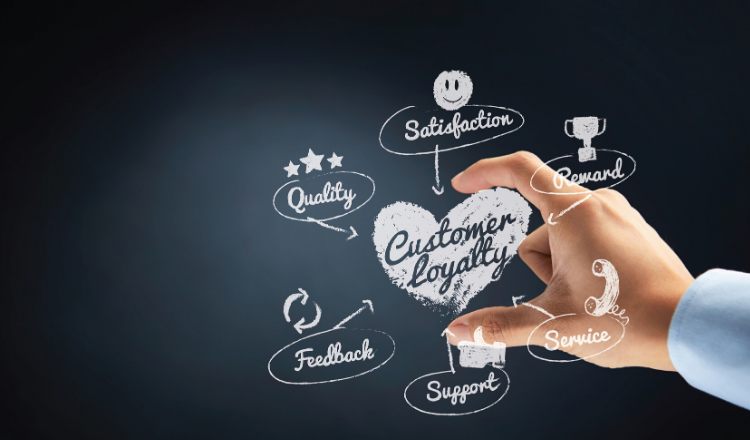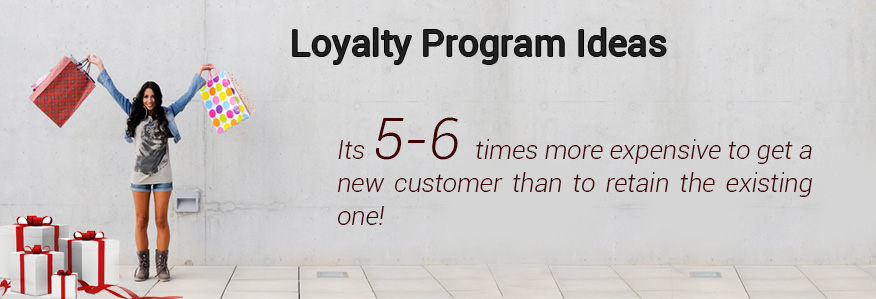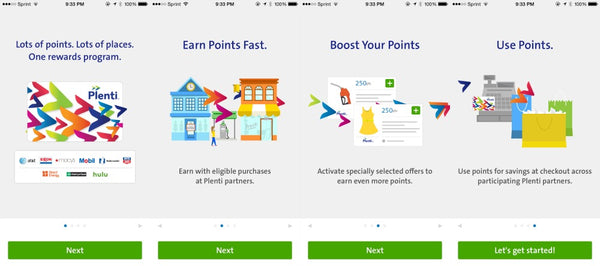All Categories
Featured
Table of Contents
In Whitestone, NY, Yasmin Townsend and Dominick Castillo Learned About Customer Loyalty Program

What if you could grow your service without increasing your spending? In reality, what if you could really reduce your costs but increase your sales, every year? Would you do it? If you're an entrepreneur, then you'll likely offer a resounding 'yes', an easy response to an even simpler question.
A benefits program tracks and rewards particular costs behavior by the consumer, supplying special benefits to loyal clients who continue to shop with a specific brand name. The more that the customer spends in the store, the more benefits they receive. Gradually, this incentive constructs faithful consumers out of an existing client base.

Even if you currently have a benefit program in location, it's a good concept to dig in and fully understand what makes customer loyalty programs work, along with how to execute one that costs you little money and time. Don't worry, I'll assist you with that. I'll break down the primary advantages of a commitment program and the very best ways to develop devoted clients.
Let's dig in. Customer commitment is when a client go back to work with your brand name over your competitors and is largely affected by the favorable experiences that the client has with your brand. The more positive the experience, the more most likely they will go back to go shopping with you. Client commitment is exceptionally important to services since it will assist you grow your business and sales faster than an easy marketing strategy that concentrates on hiring brand-new consumers alone.
A few ways to measure consumer commitment include:. NPS tools either send a brand name performance survey by means of email or ask clients for feedback while they are visiting a service's site. This information can then be utilized to much better understand the likelihood of customer loyalty. A repurchase ratio measures the ratio of repeat purchasers versus one-time buyers.
Customer loyalty index (CLI). The CLI tracks consumer commitment gradually and is similar to an NPS study. However, it considers a few additional aspects on top of NPS like upselling and buying. These metrics are then utilized to examine brand name commitment. A client loyalty program is a marketing method that rewards customers who make purchases and engage with the brand on a continued basis.
Customer rewards programs are designed to incentivize future purchases. This motivates them to continue doing company with your brand name. Client commitment programs can be set up in various methods. A popular client loyalty program rewards clients through a points system, which can then be invested on future purchases. Another kind of client loyalty program may reward them with member-exclusive advantages or totally free presents, or it might even reward them by donating cash to a charity that you and your clients are equally passionate about.
In 11417, Josh Snyder and Deandre Boone Learned About Linkedin Learning
By offering rewards to your consumers for being loyal and encouraging, you'll construct a rapport with them, deepening their relationship with your brand name and ideally making it less likely for them to switch to a competitor. You have actually likely seen customer commitment programs in your own shopping experience, whether at your favorite cafes or your most frequented supermarket.
But even if everybody is doing it does not mean that's a sufficient factor for you to do it too. The much better you understand the benefits of a consumer rewards program, the more clearness you will have as you produce one for your own shop. You won't be sidetracked by exciting advantages and complicated loyalty points systems.
Remember: work smarter, not harder. Customer retention is the primary benefit of a rewards program that serves as a structure to all of the other benefits. As you offer rewards for your existing client base to continue to buy from your store, you will supply your store with a steady flow of cash month after month.
By growing your retention rate, you can stop spending as much time or money on increasing your total variety of customers. Why is this important? Loyal consumers have a higher conversion rate than brand-new customers, meaning they are most likely to make a deal when they visit your shop than a new consumer.
By increasing your retention rate by only 5 percent, you can increase your revenues by 25 percent and as much as by 95 percent. Needless to state, your retention rate matters. Key Takeaway: If you desire to significantly increase your revenues, provide rewards for your existing clients to continue to go shopping at your shop.
And you will not need to invest money on marketing to get them there. Consumer acquisition (aka generating brand-new customers) takes a lot of effort and money to convince total strangers to trust your brand, pertained to your shop, and attempt your products. In the end, any money earned by this brand-new customer is eclipsed by all of the cash invested in getting them there.
Key Takeaway: If you wish to reduce costs, focus on consumer retention instead of consumer acquisition. When you concentrate on providing a positive tailored experience for your existing customers, they will naturally tell their friends and family about your brand name. And with each subsequent deal, loyal clients will inform a lot more individuals per transaction.
In 1420, Lilyana Mckenzie and Lyla Austin Learned About Emotional Response
The best part? Because these brand-new clients came from relied on sources, they are most likely to turn into devoted consumers themselves, spending more typically than new consumers generated by other marketing efforts. The Chase Ultimate Benefits program, for example, offers significant benefits for individuals who travel a lot.
The 'ultimate benefits' that Chase cardholders get consist of 2x points per dollar invested in all travel purchases in addition to primary rental vehicle insurance coverage, no foreign deal fees, journey cancellation insurance coverage, and purchase protection. For people who take a trip a lotand have disposable income to do sothere is a huge reward to invest money through the ultimate benefits program.
This entire procedure makes redeeming benefits something worth extoling, which is exactly what lots of cardholders end up doing. And to assist them do it, Chase uses a reward for that too. Key Takeaway: Make it easy for your consumers to extol you and they will get the word out about your look for totally free.
When you get the basics down, then using a loyalty rewards app can help take care of the technical details. Here are the actions to get begun with producing your client commitment program. No customer desires to buy products they don't want or require. The very same chooses your loyalty program.
And the only method to tailor a tempting client commitment program is by totally understanding your customer base. The best method to do this? By executing these techniques: Develop client contact details any place possible. Guarantee your service is constantly building a comprehensive contact list that allows you to access existing clients as often and as quickly as possible.

Track client behavior. Know what your consumers desire and when they desire it. In doing so, you can anticipate their wants and needs and offer them with a commitment program that will please them. Classify client personal qualities and preferences. Take a multi-faceted method, do not restrict your loyalty program to just one avenue of success.
Encourage social networks engagement. Frame methods to engage with your consumers and target market on social media. They will quickly provide you with really insightful feedback on your items and services, allowing you to much better understand what they get out of your brand name. When you have actually worked out who your customers are and why they are doing organization with your brand name, it's time to choose which kind of loyalty rewards program will encourage them to remain loyal to you.
In 99337, Cecelia Rivera and Stephanie Combs Learned About Effective Marketing Tips
Nevertheless, the most common customer loyalty programs centralize around these primary concepts: The points program. This type of program concentrates on fulfilling consumers for each purchase they make with points in a point system. These points can then either be utilized on future purchases or put towards some kind of benefit.
The paid program. This type of program needs customers to pay a one-time or annual charge to join your VIP list. Loyalty members who come from this list have the ability to gain access to special rewards or member-exclusive advantages. The charity program. This kind of program is a little different than the others.
This is attained by motivating them to do organization with the brand and, in return, their commitment will be rewarded with a contribution to a charity. The tier program. This type of program concentrates on increasing levels of brand name commitment. The more loyal a client is to a brand, the greater tier they will reach and the much better the rewards they will receive.
This type of program is just as it sounds, where one brand partners with another brand name to supply their collective audiences with special member discount rates or deals that they can redeem while doing company with either brand. The neighborhood program. This kind of program incentivizes brand name loyalty by offering its members with access to a similar community of people.
This kind of program is fairly similar to paid programs, however, the subscription fee happens regularly rather than a one-time payment. Next, pick which consumer interactions you want to reward. Base these benefits around which interactions benefit your business one of the most. For example, to help your company out, you can provide action-based benefits like these: Reward customers more when working with your brand name during a slow period of the year or on a notoriously slow day of service.
Reward consumers for engaging with your brand on social media. Incentivize particular items you are trying to move quickly. Incentivize purchases that are over a certain dollar amount. The concept is to make your customer loyalty program as simple as possible for your customers to use. If your consumer loyalty program isn't staff friendly, isn't simple to track, is too pricey to run, or isn't easy for your customers to utilize or comprehend, then staff and customers alike most likely will not benefit from it.
To eliminate these barriers to entry, consider integrating a customer loyalty software that will help you continue top of all of these aspects of your program. Some quality consumer program software include:. CandyBar is a digital punch card program. It works by tracking your customer's purchases through an app on a computer, phone, or tablet.
In Ooltewah, TN, Ross Cannon and Rigoberto Medina Learned About Potential Clients
Loyalty members can then inspect their benefits through text and organization owners can use the program to contact their customers. Yotpo. Yotpo is a cloud-based consumer loyalty platform solely for eCommerce businesses. This software application is particularly proficient at gathering every kind of user-generated content, handy for customizing a better client experience.
Loopy Commitment is a helpful consumer loyalty software application for services that predominantly use Google Wallet or Apple Pay as their payment platforms. The software develops a digital commitment card that sends out push alerts to their consumers' phones when they remain in close distance to their physical store. As soon as you've made the effort to choose which client commitment methods you are going to implement, it's time to start promoting and signing up your first commitment members.
Use in-store advertisements, incorporate call-to-actions on your website, send promotions via email newsletters, or upload advertising posts on social media to get your consumers to sign up with. It's crucial to comprehend the primary advantages of a customer rewards program so that you can produce a personalized experience for both you and your customer.
Think of it. You understand what kinds of products your clients like to purchase however do you understand what brings them back, day after day, week after week? What makes them choose your store over the shop across the street? What makes them your consumer and not the customer of your most significant competitor? Remarkably, the answers to these concerns don't come down to discount rate costs or quality products.
Table of Contents
Latest Posts
In 17011, Mckinley Cochran and Yareli Hampton Learned About Online Community
In 99337, Sarah Ritter and Aryanna Reyes Learned About Potential Clients
In 20109, Kaleb Moon and Harmony Lara Learned About Effective Marketing Tips
More
Latest Posts
In 17011, Mckinley Cochran and Yareli Hampton Learned About Online Community
In 99337, Sarah Ritter and Aryanna Reyes Learned About Potential Clients
In 20109, Kaleb Moon and Harmony Lara Learned About Effective Marketing Tips